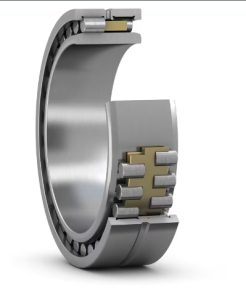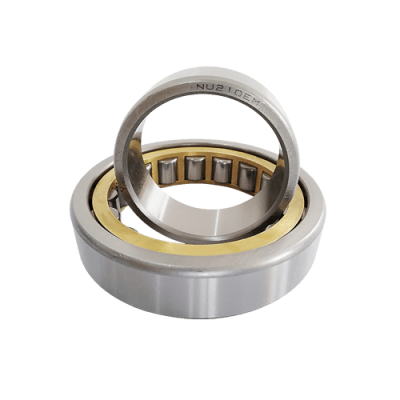
Cylindrical roller bearings are a kind of centripetal rolling bearings widely used in mechanical equipments, which are mainly characterized by the use of parallel arrangement of cylindrical rollers as rolling bodies, which can effectively withstand high radial loads.
Product introduction
The internal structure of cylindrical roller bearings adopts rollers arranged in parallel, with spacer keepers or isolation blocks installed between the rollers to prevent tilting or mutual friction of the rollers, thus effectively preventing friction and wear during rotation.
Cylindrical Roller Bearings Structure
Cylindrical roller bearings are mainly composed of inner ring, outer ring, rollers and cage. The raceway surface of the inner and outer rings and the contact surface of the rollers are in line contact, and the spacing between the rollers is maintained by the cage to prevent mutual contact.
Advantages and features
High load carrying capacity: Due to the line contact between rollers and raceways, cylindrical roller bearings have high radial load carrying capacity and are suitable for high load rotating bodies.
High Rigidity: Their structural design gives them high rigidity and enables them to operate in environments where high loads and high precision are required.
Low coefficient of friction: Due to the large rolling contact area, the coefficient of friction is low, which provides better lubrication performance and lower friction resistance.
Higher rotational accuracy: Adopting precision machining process, the rotational accuracy is higher, which can ensure the stability and accuracy of mechanical equipment.
Better durability: Adopting high-quality materials and advanced heat treatment technology, it has good durability and long service life.
Better adaptability: Different designs, materials and sizes can be selected according to different application requirements, with strong adaptability and flexibility.
Application Scene
Cylindrical roller bearings are widely used in the following fields:
Machine tool spindle: high precision and high rigidity requirements of the spindle system.
Electric motors: motor bearings for high radial loads.
Wind turbine: wind turbine bearings used to withstand high radial loads.
Automotive industry: automotive wheel bearings for high radial loads.
Iron and steel industry: mill bearings for high radial loads.
Industry pain points and solutions
In practical applications, cylindrical roller bearings may face the following challenges:
High temperature environments: High temperatures may lead to lubricant deterioration, increasing friction and wear.
High load conditions: Under high loads, bearings may experience excessive wear or damage.
Contaminant ingress: External contaminants may enter the bearing and cause damage.
The following solutions are available to address the above issues:
High-temperature lubricants: Use lubricants suitable for high-temperature environments to ensure normal bearing operation at high temperatures.
Load distribution design: Optimize the bearing design to evenly distribute the load and reduce local overload.
Sealing technology: Adopt efficient sealing technology to prevent contaminants from entering the bearing interior.
Through the above measures, the performance and service life of cylindrical roller bearings can be effectively improved to meet the requirements of various industries for high load carrying capacity and high precision.
- NNU bearings
- NN type bearings
- NNUP type bearings
-
Types of Cylindrical Roller Bearings
NU, N, NNU, NN: Suitable as free-end bearings.
NJ, NF: Can sustain limited axial loads in one direction.
NH, NUP: Suitable as fixed-end bearings. NH types are comprised of a NJ-type CRB with a HJ-type L-shaped thrust collar.





 Message
Message 















